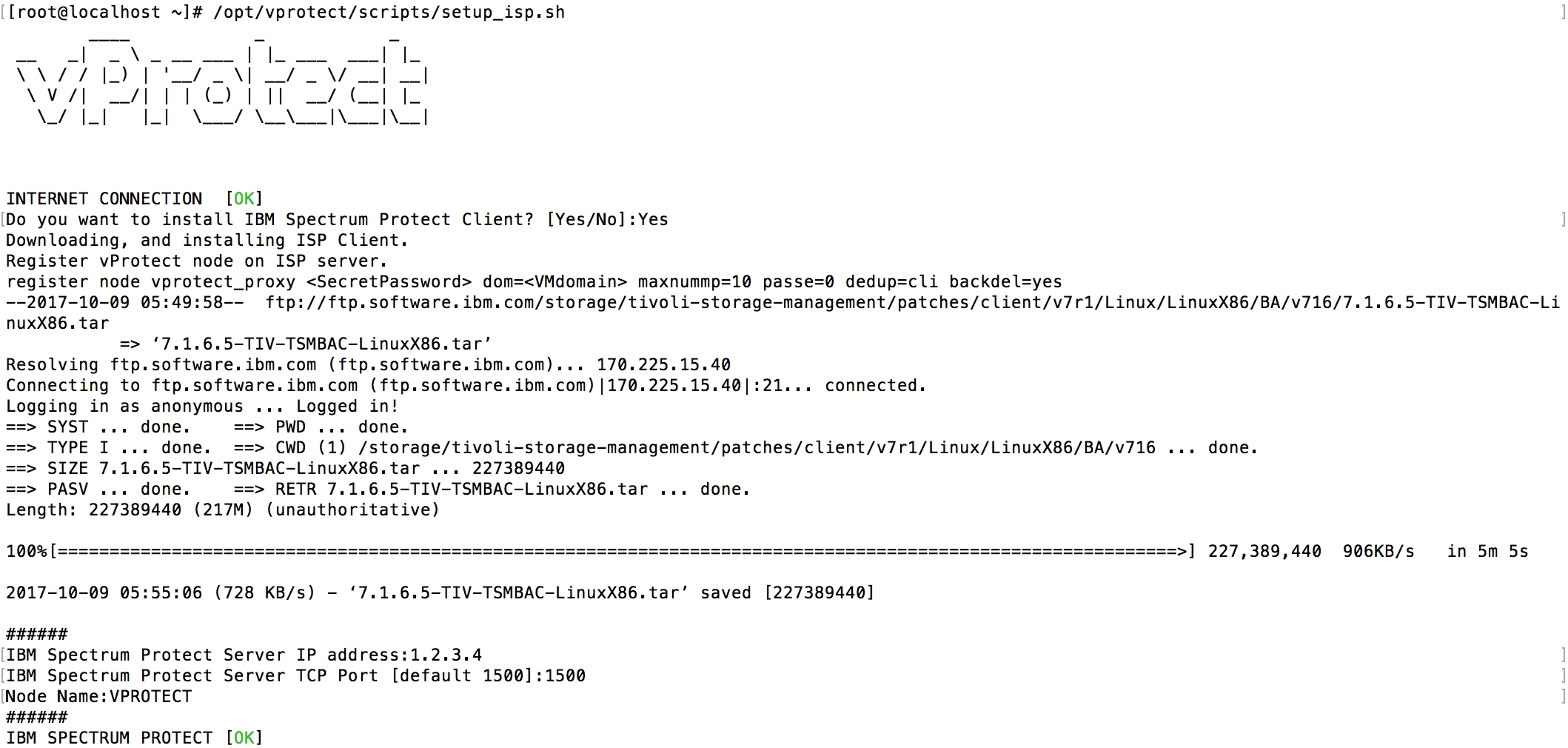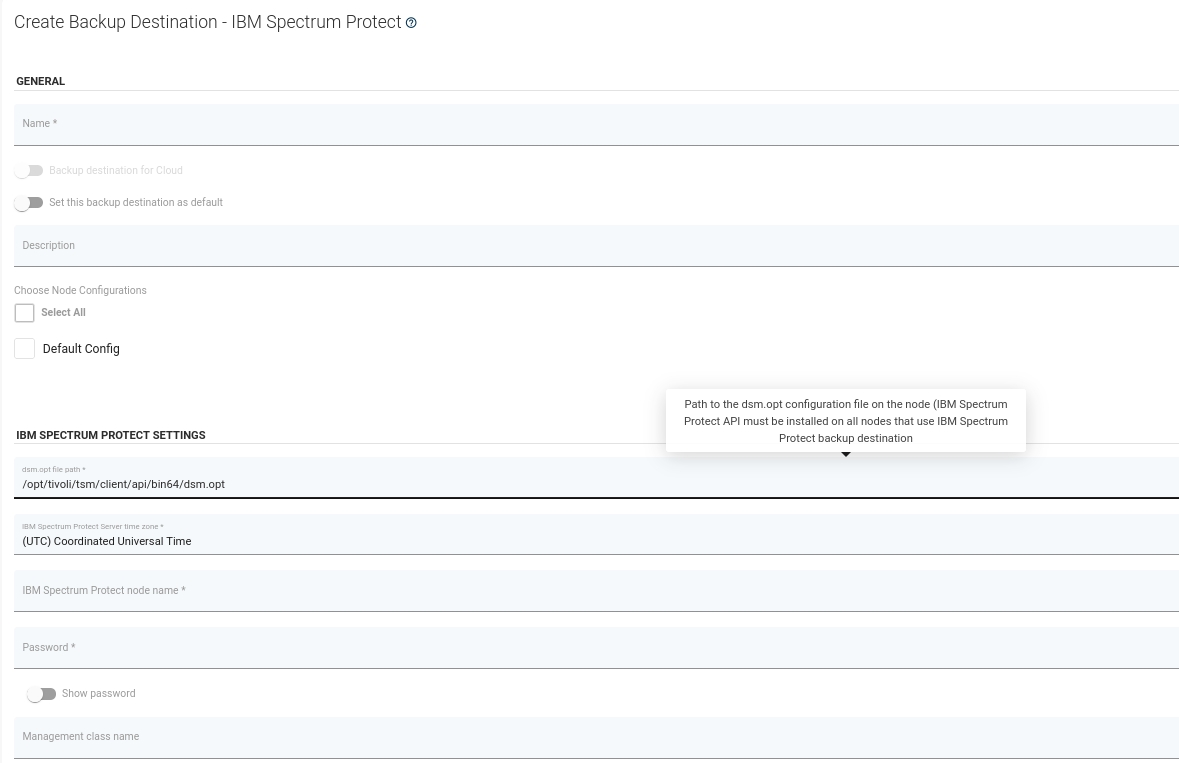IBM Spectrum Protect
Register the ISP node on your ISP server.
Log in to your ISP server and prepare a policy set for Storware Backup & Recovery backups.
Def dom vprotect Def pol vprotect vprotect Def mgmt vprotect vprotect vprotect Def co vprotect vprotect vprotect dest=<StoragePoolName> vere=nolimit verd=nolimit rete=nolimit reto=nolimit Assign defmgmt vprotect vprotect vprotect Activate pol vprotect vprotectRegister the node on the ISP server:
register node vprotect_proxy <SecretPassword> dom=<VMdomain> maxnummp=10 passe=0 dedup=cli backdel=yes
Use a script to automatically download and install the ISP API and client.
/opt/vprotect/scripts/setup_isp.sh
Make sure to type the IP address of your ISP server, TCP port, and node name correctly. For example:

Next step is to set up the Backup Destination in our UI.
Go to Backup Destination and select Enterprise
Now you can add IBM Spectrum Protect Backup Destination

Type name and attach Backup Destination to Node Configuration. You also need to set:
path to dsm.opt file (Default is
/opt/tivoli/tsm/client/api/bin64/dsm.opt), where are saved information of IBM Spectrum Protect Nodes,name of IBM Spectrum Protect Node,
password to ISP node.